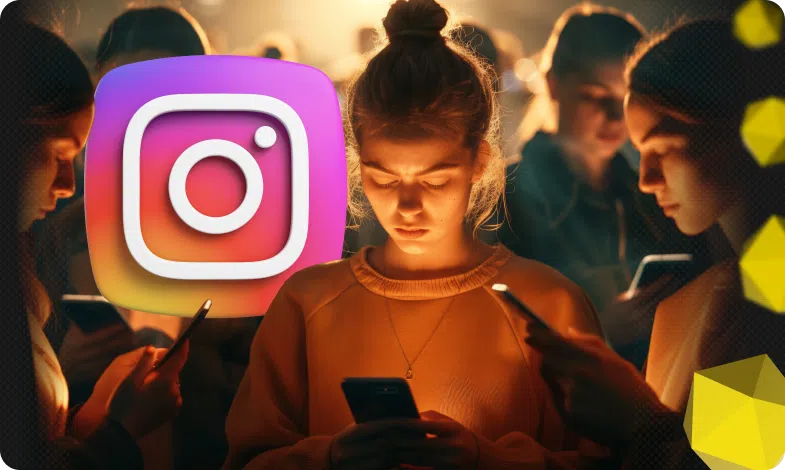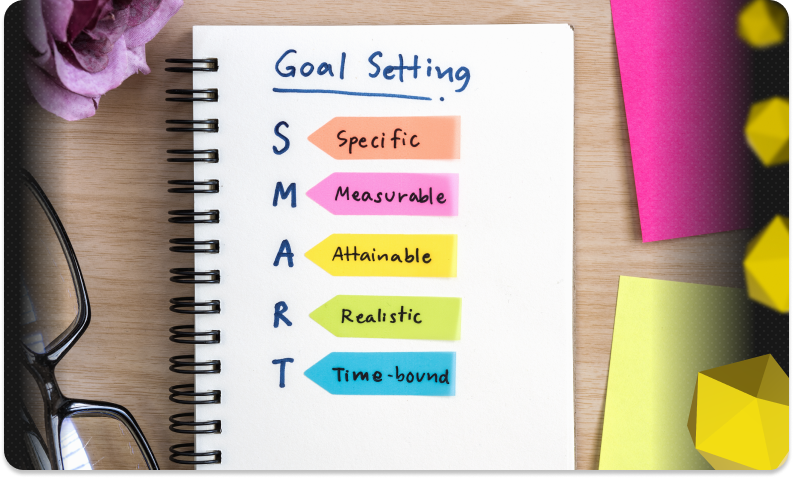Content of the article
- /01 What is massfollowing on Instagram?
- /02 Types of mass following
- /03 Comparison of massfollowing and massliking
- /04 Efficiency of massfollowing in 2025
- /05 How to use massfollowing safely?
- /06 Success and failure cases of mass following
- /07 Alternative strategies for audience engagement
- /08 Massfollowing: a tool or a manipulation?


In today’s realities, Instagram remains one of the key platforms for business promotion: from small local shops to international corporations. Among the numerous methods of rapid audience growth, mass following is distinguished by its ease of implementation and the attractiveness of the immediate result. However, the lightning-fast growth can hide a hidden risk. In this article, we will take a closer look at the mechanisms of massfollowing, its types, comparison with other engagement strategies, and analysis of its effectiveness in the context of the updated 2025 algorithms.
What is massfollowing on Instagram?
Massfollowing is a strategy of mass following of accounts of a potential target audience in order to get a mutual following. Some of these accounts are followed in return, which creates a rapid growth of indicators.
Types of mass following
There are two main ways of mass following on Instagram: manual and automated massfollowing. Each has its own peculiarities and nuances of use.
Manual massfollowing
Manual massfollowing implies that an employee, SMM manager, or content manager makes the subscriptions without the help of bots. The process includes the following steps:
- Preparation of the target list: analysis of thematic hashtags, locations, and competitive accounts to select relevant profiles;
- sorting by criteria: assessment of the activity of potential followers, the ratio of subscriptions to followers, and the frequency of publications;
- time planning of actions: subscriptions evenly throughout the day (at intervals of 10-15 minutes);
- record keeping: fixing the dates and number of subscriptions in Google Sheets or a CRM system for subsequent unsubscribe analysis.
The advantages of the manual approach are high accuracy and quality of the audience: the manager can choose only profiles with real activity or clear audience affiliation. The disadvantages are a significant time consumption (up to 4-5 hours a day with a target coverage of 150-200 accounts) and psychological stress due to the monotony of the task.
Automated massfollowing
Automated services and bots allow you to scale mass following, performing thousands of subscriptions per day without direct human intervention. The main stages of setting up:
- Choosing a service: popular platforms (e.g., Publer, Instaplus, ZEUS Automations, etc.) with built-in filters by hashtags, locations, and other functionality;
- setting parameters: specifying target languages, time intervals, and maximum daily limits;
- audience filtering: setting the conditions for the minimum number of posts or activity threshold;
- performance monitoring: control through the service’s statistics panel, analysis of the percentage of mutual subscriptions and unsubscribes within the first 48 hours.
The advantages of automation are significant process acceleration and resource savings: one specialist can manage several profiles simultaneously. However, the absence of a human filter increases the risk of attracting irrelevant or fake accounts and being sanctioned by Instagram.
Combining both methods with periodic manual audits allows you to achieve the optimal balance between growth rate and account security.
Comparison of massfollowing and massliking
Massfollowing and massliking methods are united by the desire to attract the attention of the target audience through mass actions, but the approaches differ significantly in terms of goals, performance indicators, and risk level.

When massfollowing is used, the business account owner «runs ahead» with the initiative to get some users to follow in response. As we have already noted, this results in a rapid growth in the number of followers (Vanity Metrics), but only a fraction of them are active in the form of likes or comments. Massliking, on the other hand, involves massive likes under the content of target users, which helps to increase the level of engagement (Engagement Rate).
The duration of the effect in both cases is different: mass subscribers can stay in the status of passive viewers for a long time, which reduces the long-term value (LTV) of the customer base. Massliking activates short-term responses, such as viewing Stories, following links, and participating in contests.
Mass following is advisable when you need to quickly test new niches or reach other people’s audiences (for example, for B2B accounts), while oiling is better for seasonal promotional campaigns, contests, and individual publications that require an instant response.
A combination of both strategies – for example, warming up the audience with likes first and then subscribing – has a synergistic effect, but requires careful adjustment of daily limits and irregular intervals to minimize risks.
Efficiency of massfollowing in 2025
In 2025, Instagram continues to improve its systems for detecting unnatural activity. The platform not only limits the number of permissible actions in terms of following, liking, and messaging, but also analyzes behavioral patterns. For example, the same time between actions, monotonous comments, or a rapid increase in subscriptions without an organic background signal the potential use of automation.
In addition, the platform applies differentiated limits depending on the «age» of the account, its history of violations, and engagement rates. Young profiles (up to 3 months old) are subject to strict limits of up to 100 follows per day, while profiles with a positive history of actions may have higher limits, but remain floating and non-public.
Instagram has become especially sensitive to actions that are repeated through the same IP addresses, VPNs, or third-party applications with opaque APIs. Such accounts often end up in a «shadow ban» – posts are not shown even to followers.
In practice, the effectiveness of massfollowing remains controversial. In most cases, only about 30-100 people out of 1000 mass followers are actually interested in the account content. This creates distorted profile statistics: the total number of followers grows, but the engagement rate (ER) decreases, which can affect the ranking of posts in the feed.
In addition, such an audience usually responds poorly to calls to action: they rarely click on links, do not participate in polls or sweepstakes. This reduces the effectiveness of the profile as a sales or customer interaction tool. In 2025, when platforms prioritize quality interaction, such an imbalance can cost businesses by reducing their reach, blocking features, or losing trust from real subscribers.
Despite all these factors, business owners still use mass following. Therefore, let’s analyze the safety rules for using this promotion tool.
How to use massfollowing safely?
Massfollowing in 2025 can no longer be just a «mass attack» on everyone, but only a precise, controlled interaction with a potentially loyal audience.
Optimal limits and intervals
Safe use starts with understanding the technical limits. For manual mass emailing, a safe volume is up to 200-300 subscriptions per day, distributed evenly throughout the day. If you use automation, the permissible number can reach 800-1000 actions, but only if you have flexible settings.
The intervals between subscriptions should be irregular – this is a key element. For example, a series of actions in the morning, then a pause, then several actions in the evening. This behavior is more human and less likely to trigger Instagram’s algorithms. It is worth alternating subscriptions with other activities, such as viewing stories, liking, and saving posts.
Choosing services and monitoring audience response
Among the mandatory requirements for a service is the availability of filters: by location, language, number of followers, and frequency of posts. For example, if a business operates only in Ukraine, it makes no sense to subscribe to profiles from another region en masse.
Once the campaign is launched, it is important not to leave the process unchecked. You should review analytics at least once a day:
- how many people have followed you in response;
- what level of interaction new followers have;
- whether unsubscribes have become more frequent.
This can be tracked not only in Instagram Insights, but also in third-party platforms (e.g., HypeAuditor, Insist) that provide a more flexible analysis of audience behavior. If you see that the growth of followers is accompanied by a decrease in engagement, this is a signal to stop the campaign and review the settings.
Examples of settings to minimize risks
Even within the framework of mass following, you can be cautious. Let’s look at an example. For example, the owner of a vegan cosmetics store focused on the Ukrainian market can set up a targeting according to the following parameters:
- Hashtags: #eco, #organiccare, #crueltyfree;
- geography: users from Kyiv, Lviv, Kharkiv;
- activity: profiles with the last post no older than 10 days.
For automated actions, it is worth setting a sleep-pause mode when the system does not perform any actions at night, for example, from 00:00 to 07:00. This avoids monotonous activity and creates the effect of «live» profile management.
You also need to limit the number of actions per hour: no more than 50-60 subscriptions per hour, alternating with likes, viewing Stories, or saving posts. Ideally, you should create an action plan for the week with a gradual increase and decrease in activity to avoid sharp peaks.
The key to safe massfollowing is not only in adhering to the limits, but in adapting to the behavior of a real person. And the more natural this activity is, the higher the chance of not only attracting a follower but also retaining him or her.
Success and failure cases of mass following
Of course, the success of mass following depends on many factors and it is impossible to get the same results for different companies. Here is an example of successful and unsuccessful use of mass following for clarity.
In the article «Analysis of Growth Strategies in Social Media: The Instagram Use Case«, researchers describe an experiment with Social Bot deployed on an account with 541 followers. From February 4 to February 14, the bot worked 8 hours a day, and from February 15 to May 31, it worked around the clock. During this time, the number of subscribers grew to 2531, i.e. +1990 followers, or +367.8% in just 116 days. At the same time, the average increase in likes on posts increased from 94 to 521 (+454.3%), and weekly visits to the profile increased from 100 to 1800 (+1700%). It was also recorded that the engagement rate (ER) remained at the level of 30-53% even after the bot activity was curtailed, which indicates the long-term effect of a well-thought-out mass-following strategy.
A negative experience is demonstrated by the Observational Study of the TrushSocial service: out of 83 accounts that activated a paid subscription, 65 accounts (78%) lost comments and followers within 3 months, technical restrictions appeared, and 19 accounts (23%) were finally blocked by the end of the fifth month. The rest of the profiles that escaped banning experienced a 65% drop in engagement on average. The authors of the study conclude that aggressive automation through third-party bots leads to significant reputational risks and can completely devalue investments in boosting.
Alternative strategies for audience engagement
Massfollowing can be a short-term attention-grabbing tool, but in 2025, businesses will increasingly have to balance the speed of audience growth with its quality. For those looking to build a stable presence on Instagram, there are a number of effective alternatives that work in the long run and do not violate the platform’s policies.

Content marketing
Consistent work with content remains the basis for sustainable organic growth. It is not only about the visual style but also about the content:
- guides and step-by-step instructions that address specific audience needs (for example, «how to choose SPF for oily skin»);
- customer case studies or mini-stories with real results increase trust;
- educational content: short infographics, tips, carousels explaining complex topics.
Targeted advertising
If the goal is to reach people quickly and targeted, advertising remains a more manageable and measurable tool. Thanks to Facebook Ads segmentation capabilities, you can:
- work with look-a-like audiences created on the basis of active customers or website visitors;
- launch retargeting for those who interacted with the profile but did not subscribe;
- create advertising campaigns with different creatives for A/B testing.
Convert views into subscriptions and purchases!
Set up targeted advertising with A/B testing, retargeting, and lookalike audiences — WEDEX specialists will do everything to make your advertising work as effectively as possible.
Hashtags and collaborations
Hashtags are a simple but still effective way to reach a new audience. The optimal set of 10-15 tags includes general (#ecotovary, #businessinstagram), regional (#lvivbusiness, #madeinua), and branded (your own unique hashtags for collecting UGC).
Collaborations with micro-influencers (1- 10 thousand followers) often yield better results than collaborations with big bloggers. This audience is closer to the real consumer, has a higher level of trust, and provides more affordable budgets. Joint livestreams, guides, or co-creation of content help to expand the reach organically.
All of these approaches may not be as fast as mass following, but they build a loyal audience base that is more likely to convert into customers or brand ambassadors. In the long run, such strategies demonstrate the best indicators of stability and profitability.
Massfollowing: a tool or a manipulation?
Massfollowing can be an effective tool for quickly expanding your audience if you have clear targeting, adhere to safe limits, and regularly analyze the results. At the same time, the reckless use of this strategy often leads to a decrease in reach, the attraction of irrelevant followers, and sanctions from the platform.
The choice of whether massfollowing will become a useful tool in promotion or a risky manipulation depends solely on how consciously and strategically a business uses it.






 13/08/2025
13/08/2025  1613
1613



